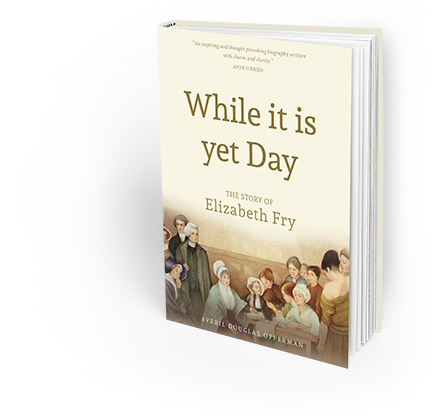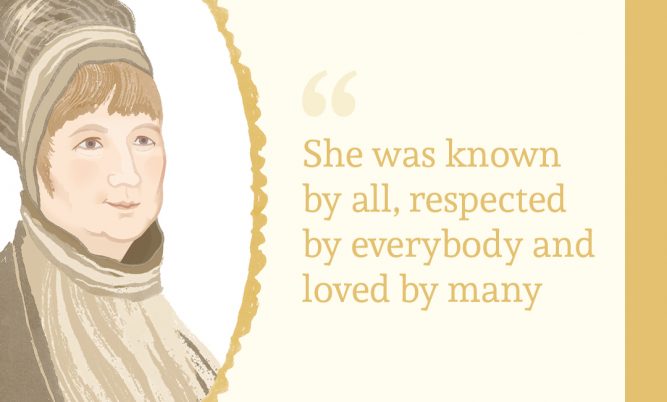I was thrilled when friends suggested we join them on the Rhone for a riverboat adventure from Avignon to Lyon. Elizabeth Fry completed the journey in reverse order in the same month – May – in 1839.
She only developed a fondness for foreign travel when she was elderly. Often she went with her husband on his business trips in the UK. She viewed these as holidays when they could spend precious time together away from the many demands on them at home.
Elizabeth really enjoyed her trip to Lyon because she felt there was progress in the prisons and refuges. The Brothers and Sisters of St Joseph believed it was their duty entirely to take care of prisoners and criminals generally. She wrote to her children: ‘They do not visit as we do, but take the entire part of turnkeys and prison-officers, and live with the prisoners night and day, constantly caring for them. I thought the effect on the female prisoners surprisingly good.’
Sadly I hadn’t enough time to trace all the places Elizabeth visited in Lyon – a 2000 year old UNESCO World Heritage site with 1.5m inhabitants. She visited the Prison of La Perrache where 132 youths were under the care of 15 of the Brethren of St. Joseph. She also visited a prison where 12 Sisters were devoted to looking after women prisoners. The same Order ran a place called La Solitude of which I could find no trace. Elizabeth described it as a building commanding a very fine view with extensive gardens and an orchard. The 80 inmates were either discharged prisoners or vagrants. She saw them busy washing or spinning and some were being trained as novices. The whole effect, she felt, was neat and orderly.
On the way to find La Perrache, I used the pedestrian underpasses which house tented villages of homeless families. Children played on the wide grass verges and washing was laid out on the branches of every nearby tree. I found an old prison, now a Catholic university, which may have been on the site of the original. I was told that the Sisters of St Joseph (now a worldwide Order) had a hospital in Lyons but in the time available, I couldn’t track it down.
Elizabeth was beguiled by the meeting of the rivers Saone and Rhone in Lyon: I expect 180 years ago there were less trees! She had to rise early for the river trip from Lyon to Avignon and wrote to her children at home in England:
‘The last day was most fatiguing; we had to rise soon after three in the morning, for Avignon, to go a hundred and fifty miles down the Rhone. We have passed through the most delightful country I ever saw. Lyons with the Rhone and Saone, is in its environs beautiful, and the passage….really lovely; mountains in the distance (parts of the Alps) their tops covered with snow; vegetation in perfection, the flowers of spring and summer in bloom at once, grass just ready to be cut, barley in the ear, lilacs, laburnums, syringas, roses, pinks, carnations, acacias in full bloom, yellow jasmine wild in the hedges.
‘It is a sudden burst of the finest summer combined with the freshness of spring. The olive groves intermixed with abundant vineyards and mulberry groves, all beautiful from their freshness. The ancient buildings at Avignon, the ruins of the banks of the Rhone, the very fine and wonderful Roman remains of the aquaduct, called the Pont du Gard, really exceed description. This place also abounds in curious buildings.’
In Avignon, Elizabeth visited the women prisoners awaiting trial in the Palais des Papes. I’m not sure how the ageing prison reformer managed all the steps! At first the gaoler refused her entrance. By the next day she returned accompanied by the Prefet, the mayor, the Procureur du Roi and several other gentlemen. Elizabeth was a woman who got her way! She had a permit to visit every prison and asylum in France. She was pleased to find large rooms, clean and airy although the 14th century old palace was not suitable for women prisoners. It was used as a prison during the French Revolution in 1789 and also as barracks for soldiers. But she thought the cells were excellent providing solitude at night and in the process of being reconstructed. In the workroom, the women were unpicking old rope – carding, spinning and weaving it until it became a coarse, strong wrapping cloth used to pack the madder (garance) grown in Province for the English market. The plant was used, and still is, to produce a reddish dye. Elizabeth was a great believer in prisoners having something worthwhile to do all day.
Avignon, which is completely enclosed by medieval walls, was the Papal Seat for 70 years in the 14th century. And of course one of its highlights is what remains of the famous bridge – if you walked too far across it now you would end up in the 505-mile long River Rhone!
Sadly, Elizabeth Fry appears to have been forgotten in France although she loved to visit and was extremely popular. Apart from one guide, in Avignon, no one had heard of her.
May 2019





